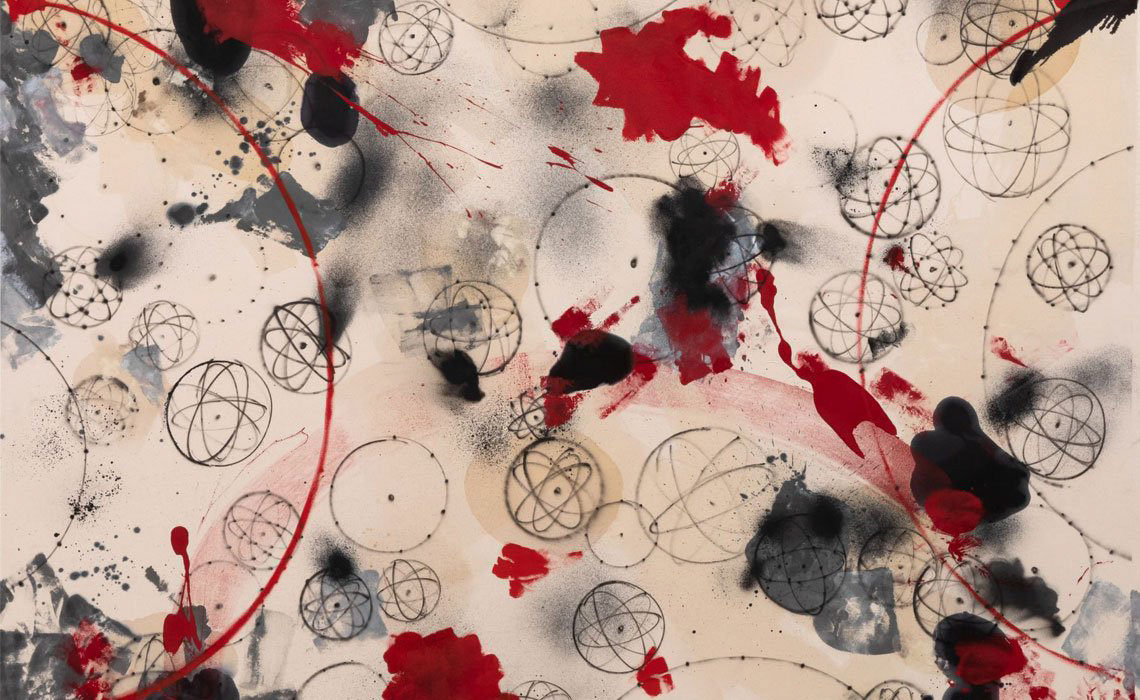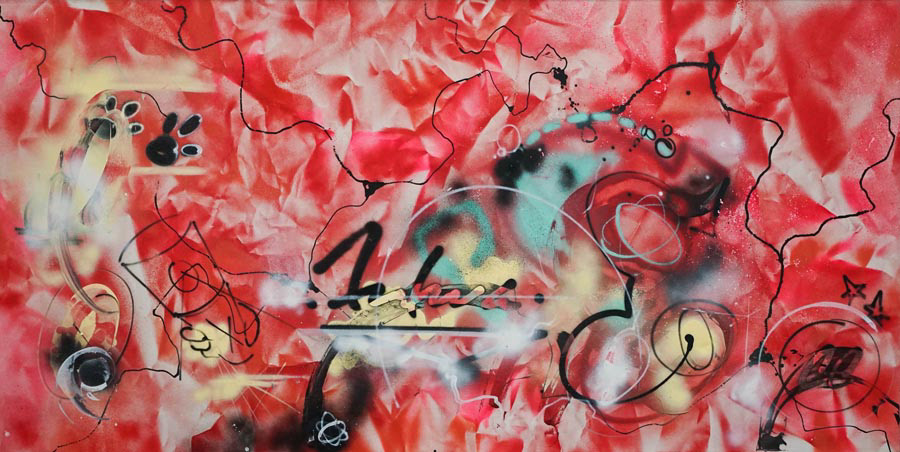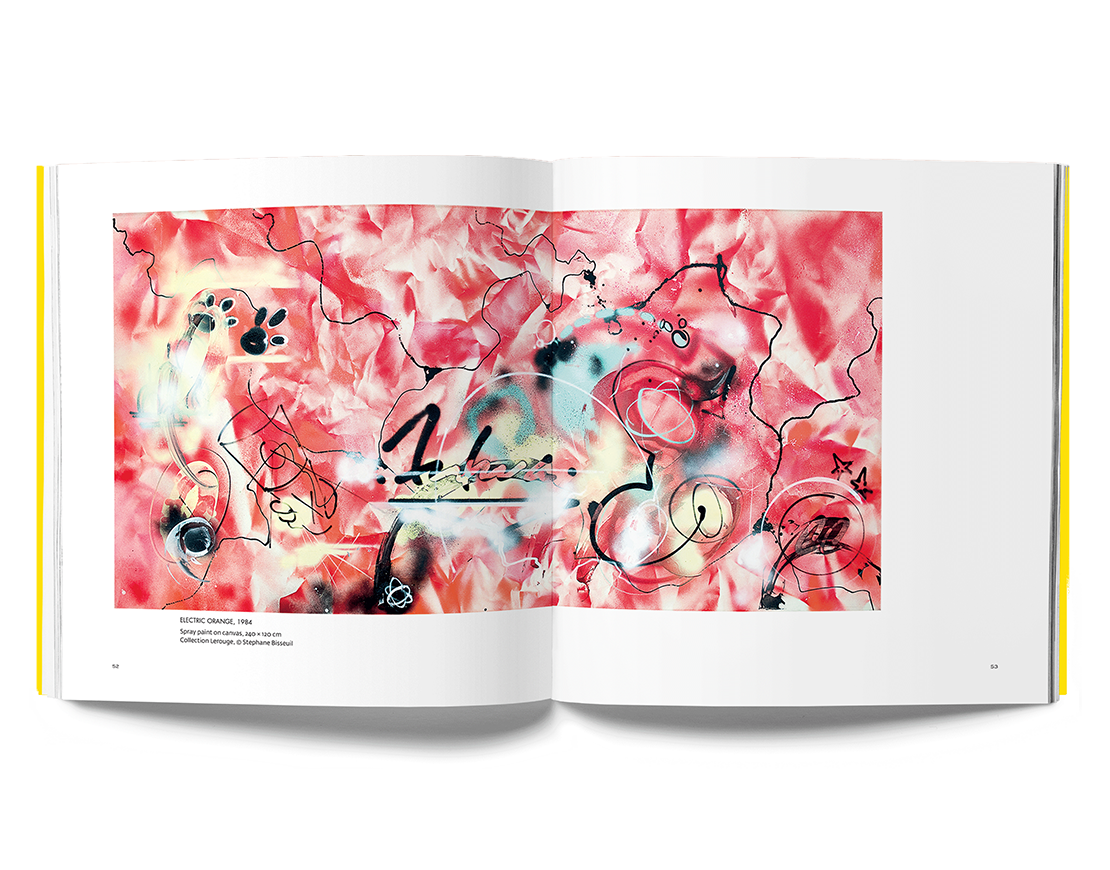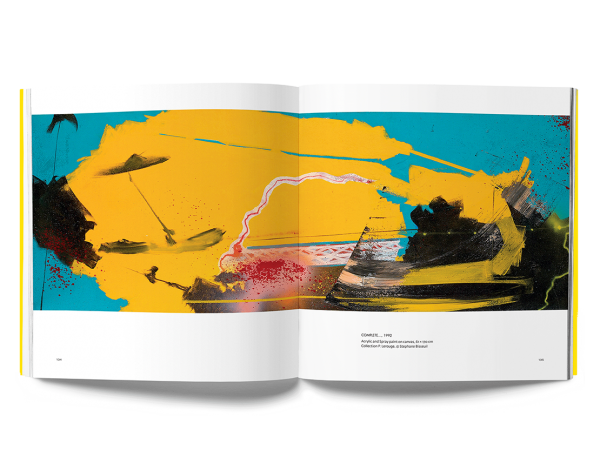Futura: Full Frame is a book by Magda Danysz exploring the life of legendary graffiti artist Futura, aka Lenny Mc Gurr, from the 1980s until today, including backstage images of the artist at work through the decades and his artworks.

“I guess I must admire the need to set things on fire”: this quote, lifted from Futura’s collabo with punk band The Clash, clearly illustrates his approach to his creative career as a whole. The so-called father of abstract graffiti started out in the 1970s “bombing” the trains of his hometown New York. He later transferred this style into paintings on canvas and was praised by the likes of Keith Haring and Jean-Michel Basquiat. With them, Futura has been a major influencer of youth culture through his collaborations with iconic brands like Nike, Levi’s, Vans, Hennessey, BMW, Medicom Toys as well as with his own brand Futura Laboratories. For the past 40 years, he has continually been pushing the boundaries of street art.

Futura, the name sounds like a premonition already. Author of a visionary body of work, Futura is known for being one of the first graffiti artists to ever depart from lettering in the early 1980s and turn to abstraction. His famous work Break, painted over the entire length of a New York subway car in 1980, constitutes a major milestone. At the time the piece sparked the beginning of a revolution in the standards of graffiti. A revolution which is still ongoing, with many artists who continue today to claim Futura’s influence.
The artist grew up in New York. A teenager in the 1970s, those years which saw the rise of the graffiti and urban arts movement, he quickly took an active part in this period of great artistic emulation and soon made his own mark thanks to his unusual style. Futura therefore holds a unique status in the history of graffiti, both as pioneer and iconoclast of the movement.
He has sometimes been compared to Jackson Pollock for the expressiveness of his paintings. In his most abstract pieces, some would see connections with the work of Vassily Kandinsky. "These references spoke of the sophistication of Futura," recalls photographer Henry Chalfant, who has documented the graffiti scene since its inception. “He had been able to move away from lettering to echo the world of art. "
From the turn of the 80s, he developed the use of canvas in his practice, exhibiting alongside artists like Jean-Michel Basquiat, Keith Haring or Kenny Scharf. The key elements of the style which we associate with Futura today were already there: clouds of color with subtle variations, fine lines that seem to be barely scratching the surface, and above all this astonishing fluidity that gives his work such a unique atmospheric mood. A personal touch and a virtuosity that make Futura an essential figure among urban artists today. After fifty years of career, he continues to be a painter with an ever-fertile creativity. One who was able, with his lofty abstract style, to stay relevant through the years and to free himself of reductive categories.
Leonard McGurr, a.k.a. Futura, was born in New York City in 1955. In the early 1970s, he founded the collective Soul Artists with Marc Edmonds, a.k.a. Ali. An actor of the influential underground movement which emerged in New York at the beginning of the 80s, he participated in the famous New York / New Wave exhibition at PS1 in 1981, a highlight of this period of cultural effervescence. At the same time he became friends with the group The Clash, for whom he painted on stage during concerts on the occasion of a European tour in 1981. Artist of historical importance, he is regularly invited to participate in projects and exhibitions by institutions around the world, including the Fondation Cartier pour l'Art Contemporain and the Palais de Tokyo in Paris, the MOCA in Los Angeles and the Museum of Fine Arts in Boston. Futura also runs his own design studio, Futura Laboratories, through which he collaborates with brands and fashion designers like Virgil Abloh (Off White, Louis Vuitton), Nike, Karl Lagerfeld, Lévi’s and many others. He lives in New York.


Futura 2000, Full Frame
Hardcover, 26x32 cm, 224 pages | Drago Publisher | ISBN: 978-88-98565-24-5
Designed and made by Nicola Veccia Scavalli